Tomato plants are heavy feeders, meaning they need a lot of nutrients to grow strong and produce plenty of fruits. Without proper feeding, they become weak, and their fruit production slows down. Many gardeners rely on chemical fertilizers, but these can harm the soil and the environment.
Instead, a powerful organic liquid fertilizer can be made at home using simple ingredients from the garden. This homemade fertilizer provides all the nutrients tomatoes need, ensuring healthy growth and a bountiful harvest.
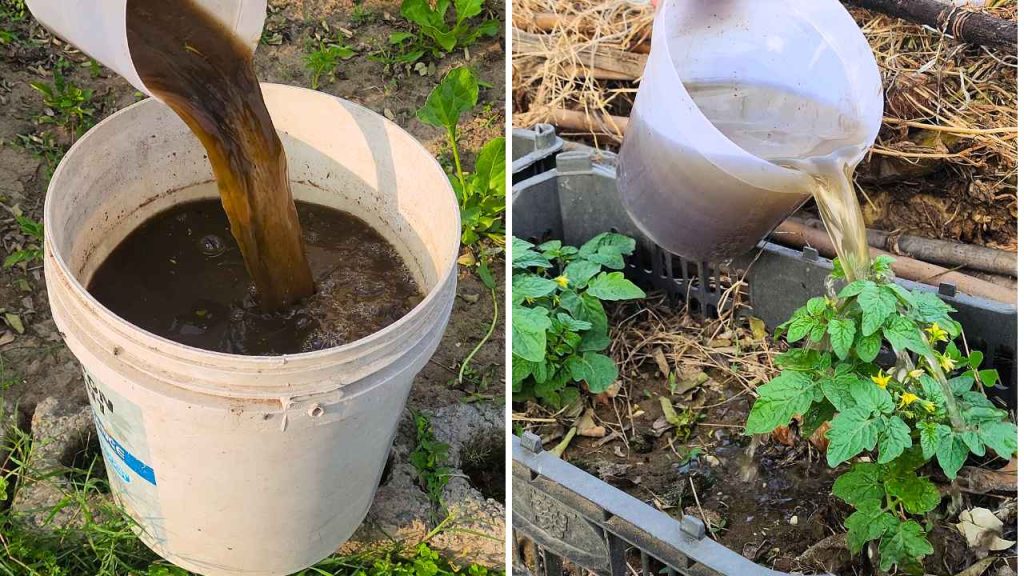
Why Tomato Plants Need Extra Nutrients
Tomato plants use a lot of energy to produce flowers and fruits. If they don’t get enough nutrients, their leaves turn yellow, fruits become small, and the plant struggles to grow. Key nutrients like nitrogen, phosphorus, and potassium are essential for their development.
Nitrogen helps in leaf and stem growth, phosphorus supports root development and fruit formation, and potassium strengthens the plant’s overall health, making it resistant to diseases. Instead of buying expensive fertilizers, a natural alternative can be made at home using plant materials and organic matter. This liquid fertilizer is rich in nutrients and improves the soil over time, ensuring tomato plants remain strong and productive.
Collecting Materials for the Fertilizer
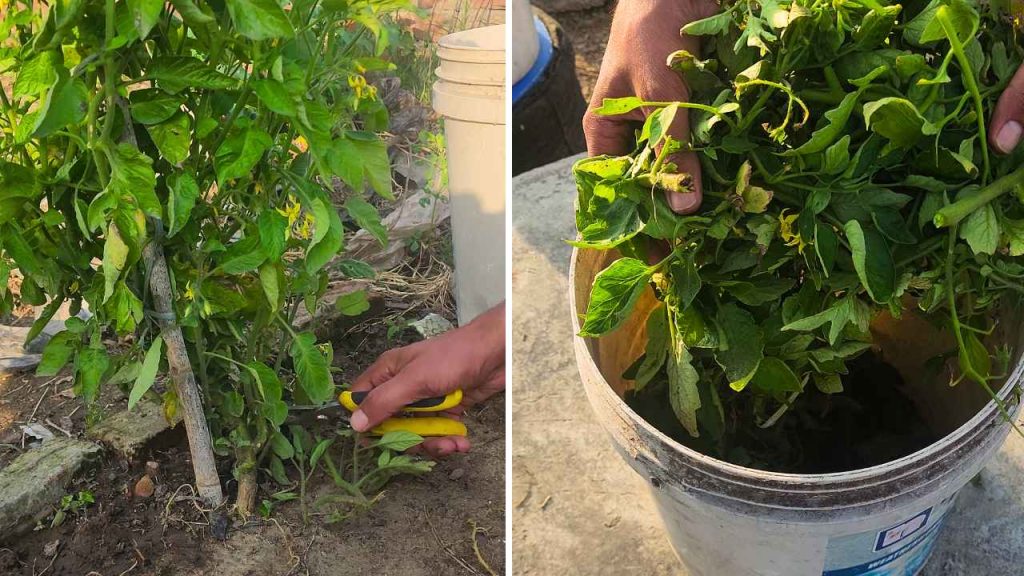
The first step in making this organic fertilizer is collecting the right materials. One of the best sources of nutrients comes from the tomato plant itself. Lower leaves and extra suckers that do not contribute to fruit production can be removed and used in the fertilizer.
These leaves contain valuable nutrients that, when broken down, become available for the plant again. The collected leaves and suckers should be placed in a container, such as a bucket or any available vessel. Chopping them into smaller pieces helps speed up the decomposition process, allowing the nutrients to release faster.
Adding Worm Castings or Compost
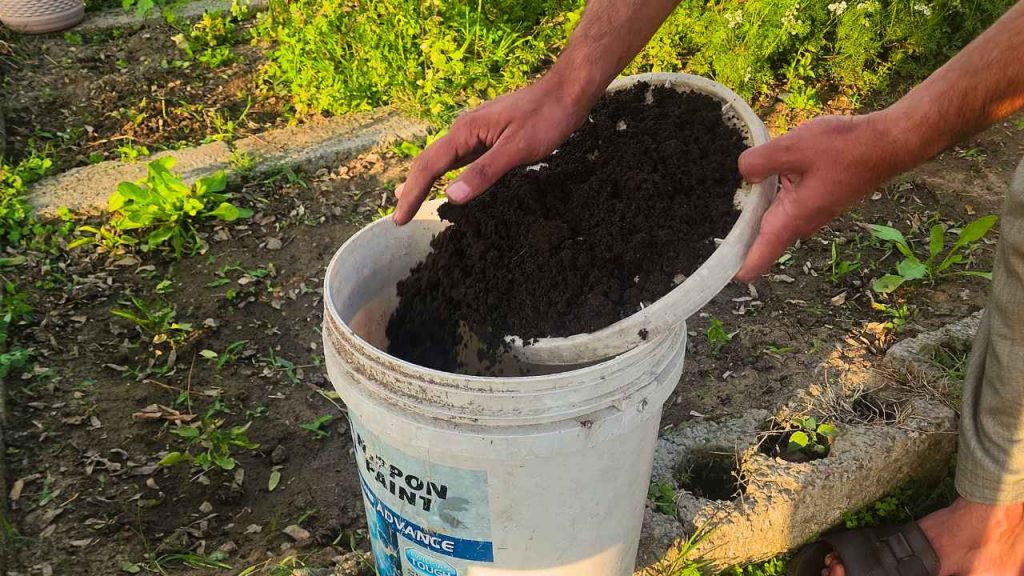
To make the fertilizer even more powerful, worm castings should be added. Worm castings are one of the best organic fertilizers available, packed with nitrogen, phosphorus, potassium, and beneficial microbes that improve soil health. These microbes break down organic matter and help plants absorb nutrients more efficiently.
If worm castings are not available, compost or even garden soil can be used as an alternative. However, worm castings provide the most benefits and create a stronger fertilizer for tomato plants.
The Importance of Using Non-Chlorinated Water
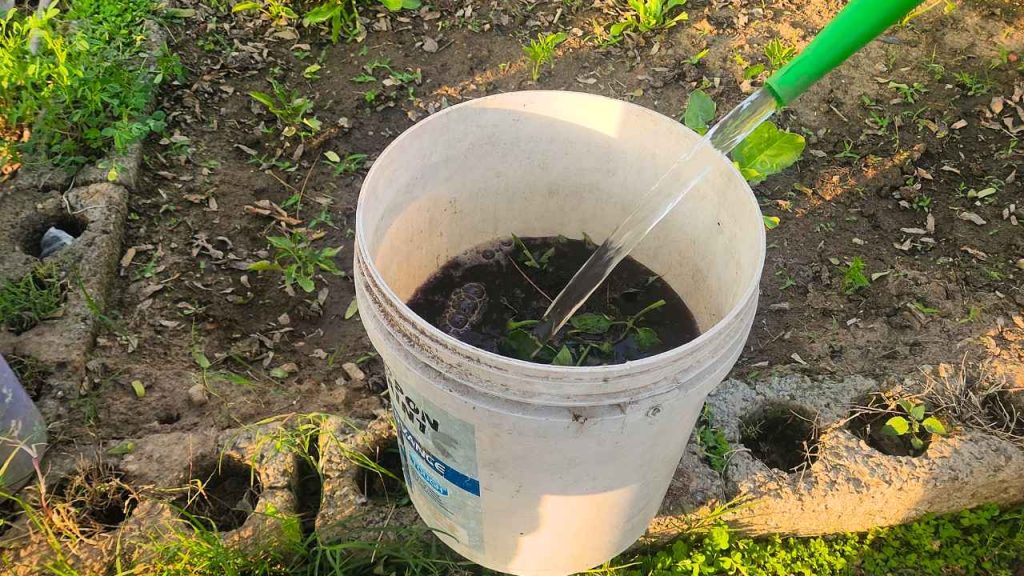
Once the plant materials and worm castings are in the container, water must be added. However, it is important to use non-chlorinated water. Chlorinated water, such as tap water, can kill beneficial microbes needed for fermentation. These microbes play a crucial role in breaking down plant materials and releasing nutrients into the liquid.
If only chlorinated water is available, it should be left in an open container for 24 hours. This allows the chlorine to evaporate, making the water safe to use in the fertilizer.
Mixing and Fermenting the Fertilizer
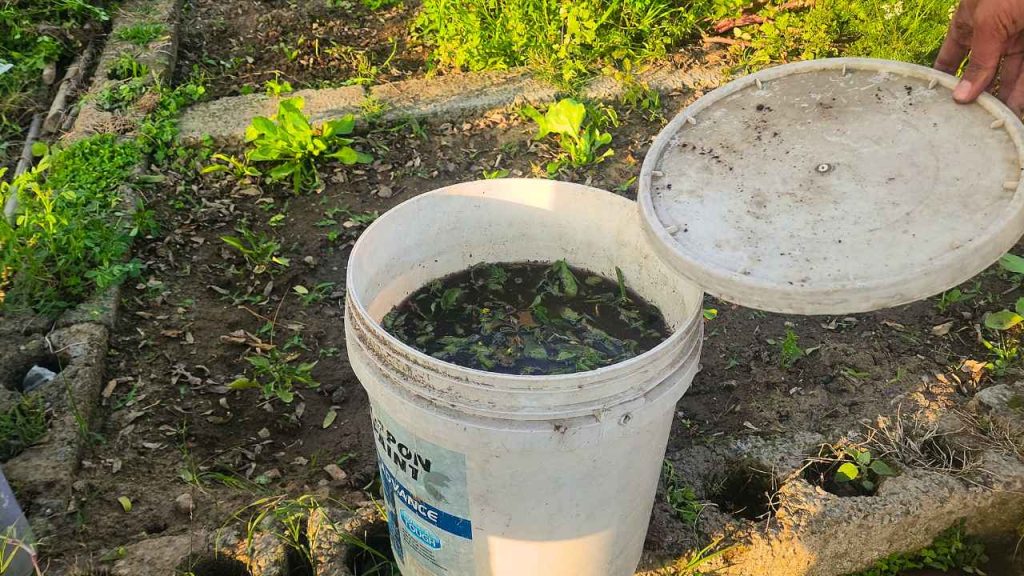
After adding water, the mixture should be stirred thoroughly to ensure that all materials are combined properly. The container should then be loosely covered. A loose cover prevents insects and dirt from entering while allowing gases produced during fermentation to escape. The mixture needs to ferment for at least 10 to 14 days.
This fermentation period allows the plant materials to break down fully, releasing their nutrients into the water. Without this process, the fertilizer will not be as effective in feeding tomato plants.
How to Know When the Fertilizer is Ready
After about two weeks, the liquid fertilizer will be dark in color and have a strong smell. This is a sign that the fermentation process is complete. The nutrients have now been fully released into the water, making it a powerful solution for tomato plants. However, the liquid is very concentrated and cannot be used directly. It must be diluted before applying to plants.
Diluting and Using the Fertilizer
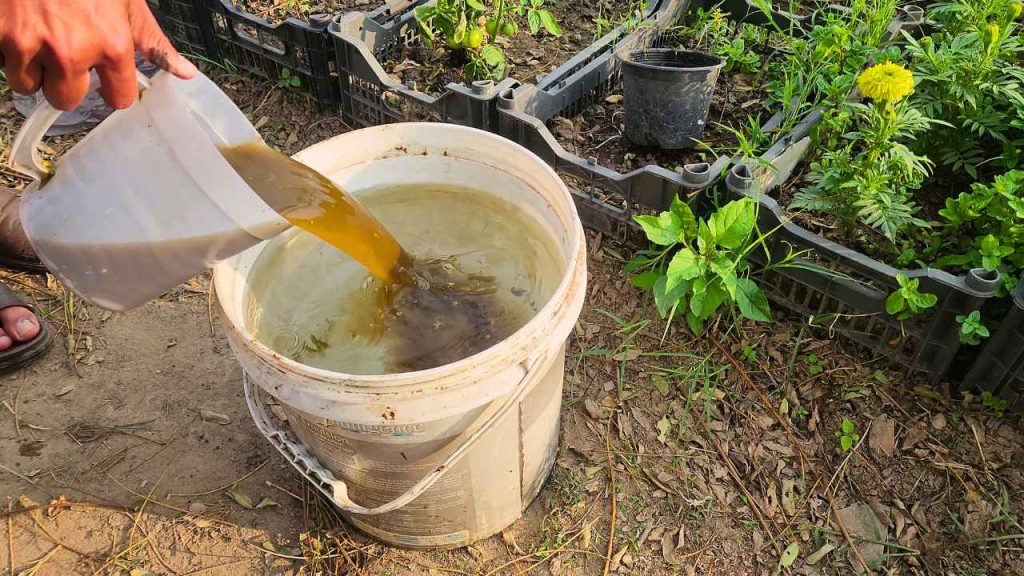
To use the fertilizer, it should be mixed with water. The best ratio is 5 liters of the fermented liquid to 10 liters of water. This ensures the nutrients are balanced and not too strong for the plants. Once diluted, the fertilizer can be poured directly onto the soil around the base of tomato plants.
It can also be used as a foliar spray by applying it to the leaves, but it should be strained first to remove any solid particles. For best results, this fertilizer should be applied every two weeks. Regular feeding helps tomato plants grow strong and produce more fruits.
Benefits of This Organic Fertilizer
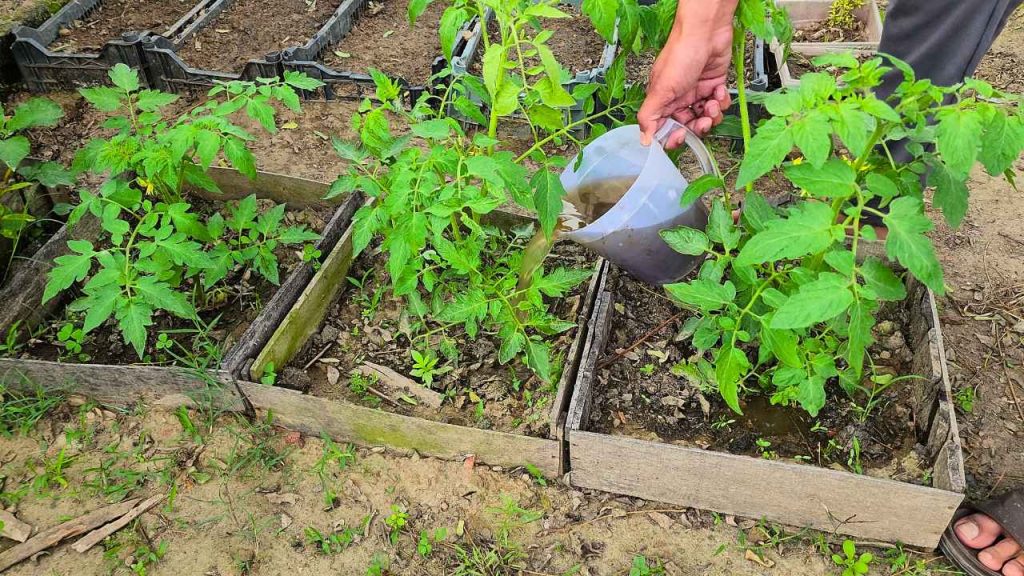
Using this homemade liquid fertilizer provides many benefits: 1. Rich in Nutrients – It contains nitrogen for leaf growth, phosphorus for strong roots, and potassium for disease resistance and fruit production. 2. Improves Soil Health – Unlike chemical fertilizers, this organic solution enhances soil quality over time by adding beneficial microbes. 3. Cost-Effective – It is made from free materials found in the garden, reducing the need for expensive store-bought fertilizers. 4. Safe and Natural – Since it is completely organic, it does not harm the environment, and there is no risk of chemical buildup in the soil. 5. Increases Yield – Regular use of this fertilizer ensures tomato plants remain healthy and produce larger, juicier fruits.
